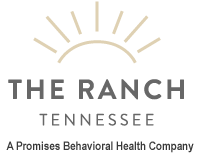by Lloyd J. Gordon, III, M.D., FASAM, Medical Director  Ten or fifteen years ago, I played golf two or three times per week. After I did not get any better, I quit playing so often. I couldn’t get any better because I had a bad golf swing. I currently play two to three times per year and still have a bad golf swing. It took me a long time and a lot of practice to “learn” my bad golf swing. Addiction is a lot like that bad golf swing. Addiction is a set of physiologic events combined with learned behavior, and my bad golf swing is similar. Most of us read magazines, watch films, and try varied advice in order to improve our golf game. We take these suggestions and apply them to something that is fundamentally flawed and wrong. Have you ever seen people stand on the tee of the first hole and face totally right to compensate for their left hook or face totally left to compensate for their slice? Totally frustrated, many of us seek lessons from a pro, which is similar to going to treatment or to counseling. The pro tells us that we have a bad golf swing and corrects it for us. While we are standing there in front of him, we hit the ball straighter and longer, and are extremely pleased with ourselves. The pro then tells us to go out and practice what we have been taught and counsels us that it may not feel natural. We go out and play and find that, yes, indeed, it is unnatural, and in fact, we play worse than we did before. Because it takes extreme effort to continue using this unnatural movement, we gradually get back into our old golf swing. We do this because if feels natural and because it is what we have done for years. We then begin to play our same old awful game and continue to score poorly.
Ten or fifteen years ago, I played golf two or three times per week. After I did not get any better, I quit playing so often. I couldn’t get any better because I had a bad golf swing. I currently play two to three times per year and still have a bad golf swing. It took me a long time and a lot of practice to “learn” my bad golf swing. Addiction is a lot like that bad golf swing. Addiction is a set of physiologic events combined with learned behavior, and my bad golf swing is similar. Most of us read magazines, watch films, and try varied advice in order to improve our golf game. We take these suggestions and apply them to something that is fundamentally flawed and wrong. Have you ever seen people stand on the tee of the first hole and face totally right to compensate for their left hook or face totally left to compensate for their slice? Totally frustrated, many of us seek lessons from a pro, which is similar to going to treatment or to counseling. The pro tells us that we have a bad golf swing and corrects it for us. While we are standing there in front of him, we hit the ball straighter and longer, and are extremely pleased with ourselves. The pro then tells us to go out and practice what we have been taught and counsels us that it may not feel natural. We go out and play and find that, yes, indeed, it is unnatural, and in fact, we play worse than we did before. Because it takes extreme effort to continue using this unnatural movement, we gradually get back into our old golf swing. We do this because if feels natural and because it is what we have done for years. We then begin to play our same old awful game and continue to score poorly.

Is this what we want to do or the goal we are aiming for? Of course not. We then try to compensate by taking little bits and pieces of what the pro told us and incorporating them into that bad golf swing. Totally frustrated, we wish we could take the pro with us on a round of golf. There is, of course, brain chemistry that includes the psychological, the social and the physiologic and which controls this whole set of events. I watch this happen with addicted patients every day. I tell patients that it is important to embrace the concept that one grows into addiction. Addiction is the sum total of thousands of choices. For example, I may see a patient in the infirmary with strep throat and can, so to speak, remove the strep throat from the person by giving antibiotics. Having had strep throat does not fundamentally alter who or what the person is. Addiction is not a diagnosis that can be “peeled off”; it is a fundamental part of who a person is. We teach patients in treatment how to do things differently, how to be different, and how to perceive things differently. Patients begin to make these changes in treatment and initially go out and continue these changes. They have been an addict or alcoholic much longer, however, than they have been a recovering person, and gradually they begin to do what comes naturally to them. They begin to hook, slice, and miss the ball altogether in life. It would take a thousand more choices and a lot of time to begin to fundamentally change who they are. Most addicted people do not realize or accept that the way they view the world is fundamentally different; once they are addicted, they see the rest of the world through the glasses of addiction. Part of that problem is that they will not continue to ask for help and to use a support system because they feel that they “have got it and don’t need anymore help.” Unfortunately, what that says is that they have decided to go ahead and use their old swing again. There are physiologic reasons why a person early in recovery who has a traumatic event immediately thinks of using. People who aren’t addicted would not have using in their top ten choices of things to do in the midst of a traumatic event. Of the 25 years that I have been doing addiction medicine, I have come to believe that all patients need a measure of professional accountability for at least the first year of recovery. By this, I mean that they should go from intensive treatment, whether in a hospital setting or a residential program, to an intensive outpatient program and/or sober living environment. Having completed that for two to three months and having returned to their employment, they should transition from less involvement with the outpatient program to an aftercare program. They should gradually move their support from the counselors at the intensive outpatient program to a counselor or – if they need a psychiatrist – to a psychiatrist in the community. Their focus should transition from bringing issues to their group to using community-based AA to help deal with the problems of living. At the end of the year, the patient would be using community-based AA and professionals of the community that they need, be it a therapist, psychologist, psychiatrist, or sponsor familiar with early recovery issues. We focus in treatment on teaching the skills that will be needed to use the support systems available outside of treatment. Many patients don’t use AA because it terrifies them to sit in a meeting and think that they may be called on and that they may say something that does not sound as good as what other people in the meeting may say. We, therefore, make sure patients verbally participate in group and try to teach them how to use other patients/people to deal with their problems. We try to make sure that they are at least introducing themselves in community-based AA. If a patient does not begin to say anything in 12-Step support group meetings while in treatment, it is unlikely that he/she will begin to do so once out of treatment. We know a lot of the physiology behind these problems. Certainly there are medications that can help. It is fundamentally important, however, that patients practice, practice, practice. They will feel uncomfortable and unnatural at first. It is only after practice that the new begins to feel natural and that they internalize the use of the support system to solve their problems instead of the use of alcohol or drugs. Our goal is a little less slice, a little less hook, and slightly fewer misses. The greatest thing about recovery, though, is that the patients can take the pros with them (sponsors, AA, etc.) and get help with every shot if they are willing to ask for it. Photo: Hoalen

